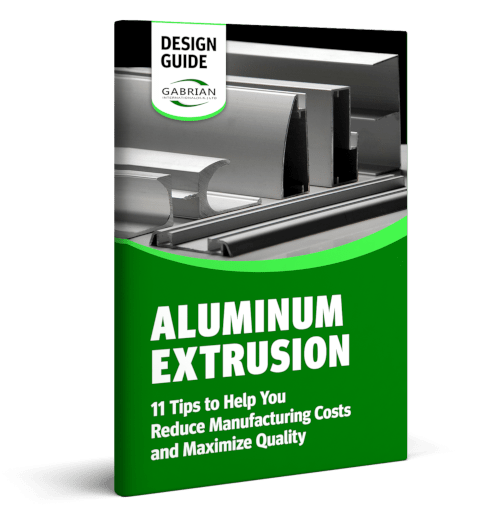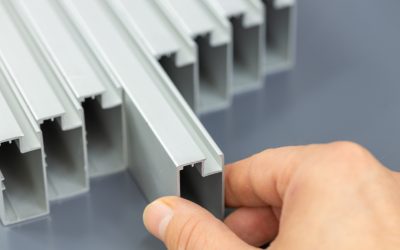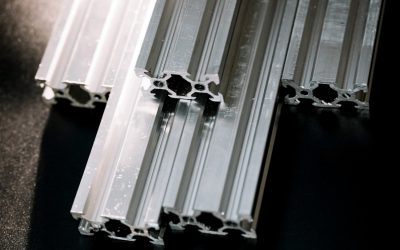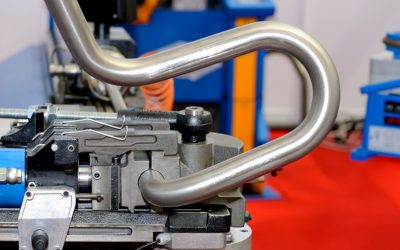Yes, you can powder coat aluminum! In fact, powder coating is one of the most popular aluminum surface finishes for a wide range of products. It provides additional durability to bare aluminum surfaces and comes in a wide range of eye-catching colors.
Here we summarize the powder coating process and discuss the pros and cons of powder-coating aluminum. You’ll gain a better understanding of this finish to determine if it is the right choice for your next aluminum project.
Table of Contents
What is the Aluminum Powder Coating Process?
We’ll break down the powder coating process into four stages: surface preparation, powder application, curing, and quality inspection.
#1 – Surface Preparation
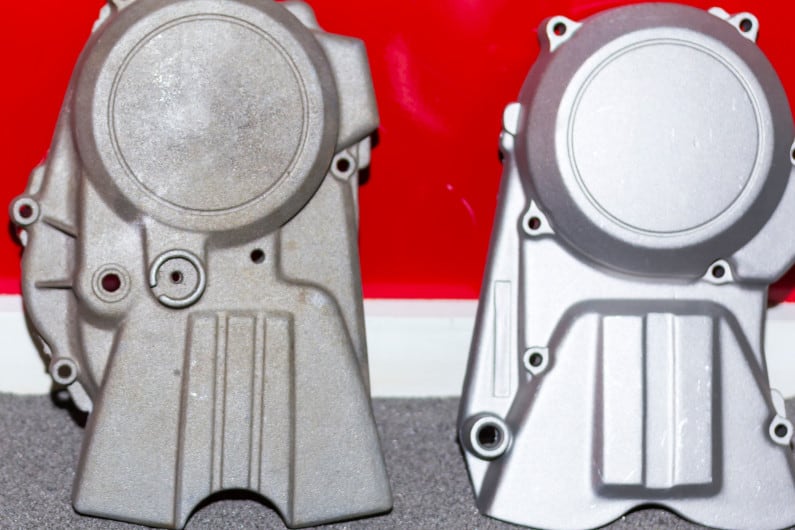
As all seasoned engineers and coating specialists know, surface preparation is vital to ensure good coating results. Failing to properly clean and prepare the substrate’s surface results in poor adhesion — leading to flaking and disbondment.
Before powder application, coating specialists must remove old debris or coatings and thoroughly clean the surface. Depending on the condition of the aluminum parts and the desired level of coating quality, the processes will vary.
The processes might include:
- Scraping, grinding, and using solvents to remove old coatings.
- Using pressurized water, brushes, and chemical solvents to clean surfaces and remove debris, oil, and grime.
- Sandblasting or applying chemical treatments to “roughen” the aluminum substrate so that the powder coating can better adhere to the part’s surface.
The result of these processes should be a clean aluminum part without any contaminants, a completely dry surface, and a slightly rough texture so that powder can easily bond to the bare metal.
#2 – Powder Application
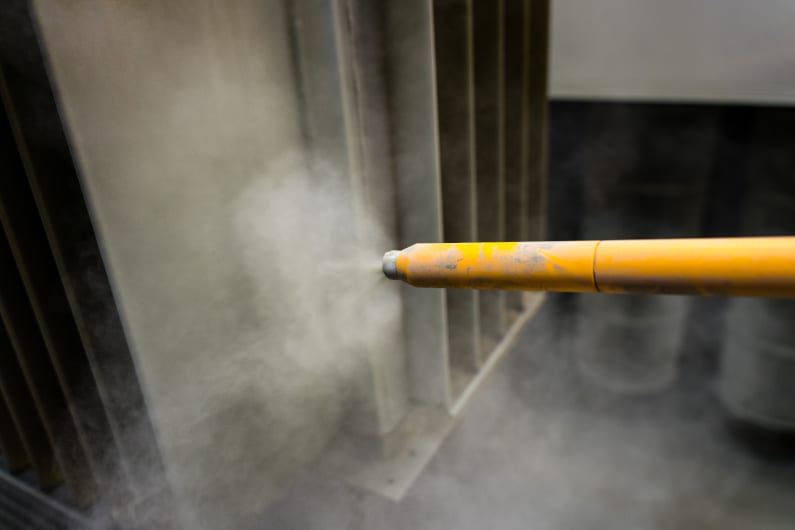
After completing the surface preparation, powder application should be relatively easy. Coating specialists must mix the powder formulation and add proper amounts of the desired color pigments, resins, and other additives.
Then, they spray the powder coating with an electrostatic spray gun. The gun gives powder particles a positive electrostatic charge, which makes them “stick” to the electrically grounded aluminum part. Any oversprayed powder can be collected and reused later.
#3 – Curing
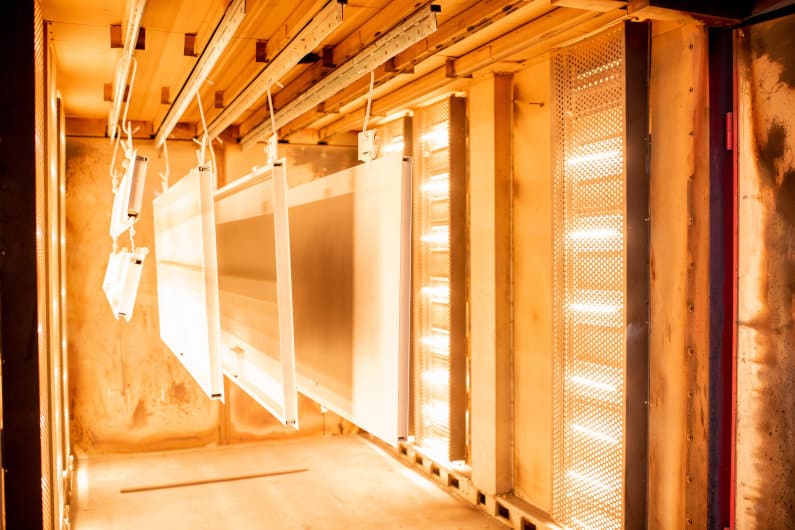
To cure properly, technicians must “bake” powder-coated parts in an oven. The exact curing time and temperature depend on the coating formulation, part size, and coating thickness. Generally speaking, curing does not exceed temperatures of 390°F (200°C) and takes approximately 10-15 minutes.
#4 – Quality Inspections
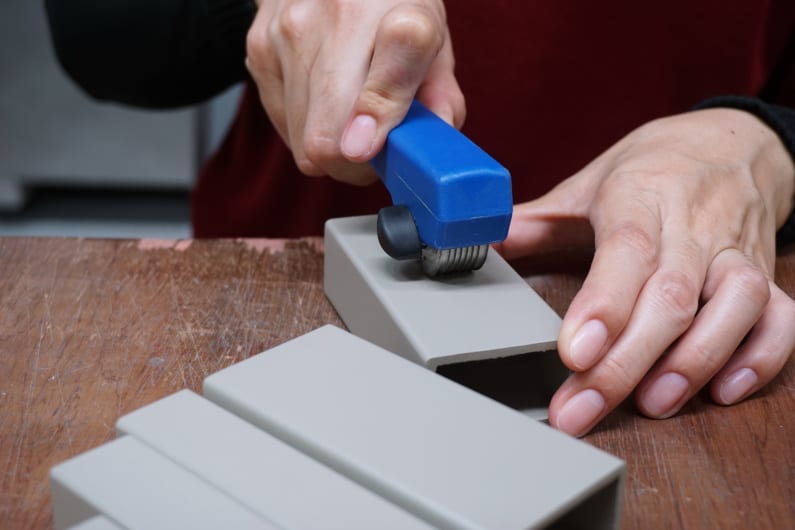
While some may not consider this part of the coating process, experts know that inspecting quality is vital. Once the parts have cooled, inspectors should check for thickness, uniformity, and surface adhesion.
There are various inspection techniques, which can vary depending on the part. For example you can conduct destructive testing on samples from the production line, such as the crosshatch testing pictured above.
Advantages of Powder Coating Aluminum
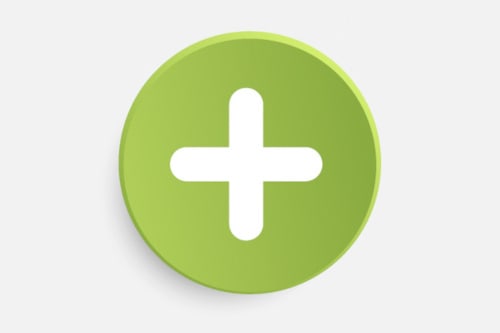
Applying a powder coating to your aluminum parts has several key benefits:
- It improves corrosion resistance.
- It enhances impact resistance and durability.
- It is electrically conductive
- It allows for many glossy colors, including custom color options.
- Depending on the additives used, it can be quite resistant to UV damage and color fading.
- It has sustainability advantages, as oversprayed powder can be collected and reused, meaning there is little waste.
- It does not release VOCs (volatile organic compounds) or expose the coating technician to toxic or carcinogenic compounds.
Disadvantages of Powder Coating Aluminum
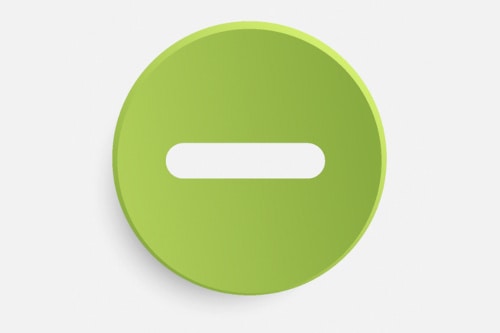
While powder coating aluminum is a great finishing option, there are a few drawbacks that designers should consider:
- It is challenging to complete minor touchups.
- It has high startup costs for the equipment.
- It creates a relatively thick coating without uniform thickness.
- It can fade over time from exposure to sunlight without certain additives. However, this is still usually better than liquid paint.
- It is applied using a spray gun, making it challenging to evenly coat complex parts, particularly those with hidden interior surfaces.
Is Powder Coating the Best Aluminum Finish?
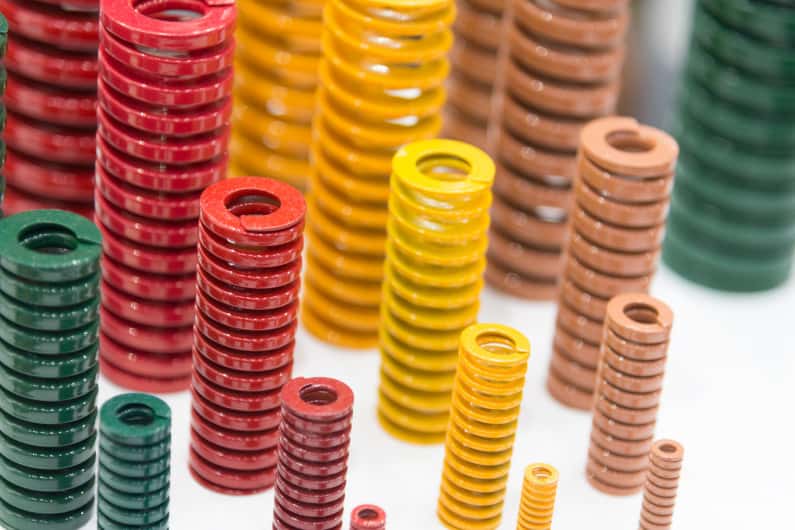
Powder coating is a great choice for making your aluminum products more durable and aesthetically appealing. But how does it compare with other popular aluminum surface finishes, like anodizing or liquid paint?
Vs. Anodized Aluminum
Powder coated aluminum isn’t as corrosion or wear resistant as anodized aluminum. It also won’t achieve the same thin, even film, especially on complex parts. However, powder coatings are cheaper to apply and offer more color options than anodizing. Learn more about anodizing vs. powder coating aluminum.
Vs. Liquid Paint
Liquid paint is often even cheaper than powder coatings to apply, especially for minor touchups, and offers a similar range of color options. Custom colors for small batch work are easier to produce for liquid-painted parts but have less color consistency than powder coatings and fade faster. Powder coatings are also much more durable and safer for people and the environment.
Ultimately, the best aluminum finishing option for your project depends on your design requirements, budget, and considerations for health & sustainability. Learn more about the types of aluminum finishes that can enhance your product.
Work With Gabrian International
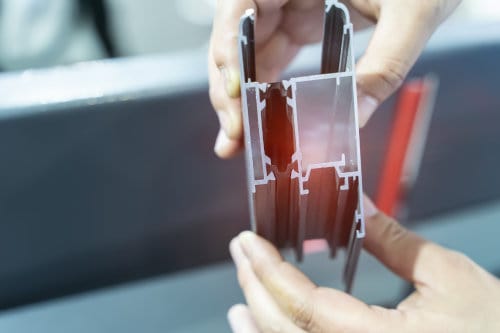
At Gabrian, we offer custom aluminum extrusions and aluminum die-cast parts that meet your needs for precision at a reasonable cost. We can also apply a wide range of high-quality aluminum finishes, so you can get your parts formed and treated using a single supplier.

